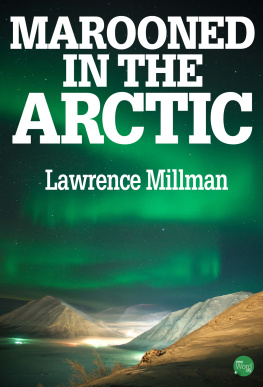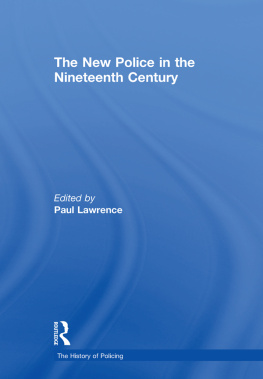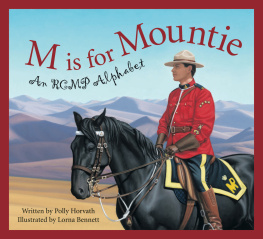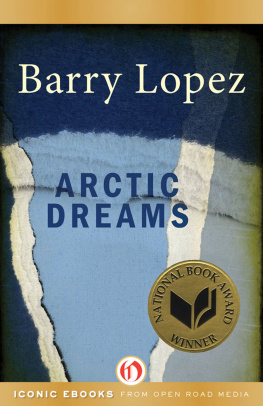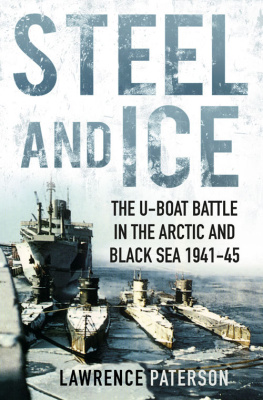Lawrence Millman - Death On Ice
Here you can read online Lawrence Millman - Death On Ice full text of the book (entire story) in english for free. Download pdf and epub, get meaning, cover and reviews about this ebook. year: 2012, publisher: New Word City, genre: Detective and thriller. Description of the work, (preface) as well as reviews are available. Best literature library LitArk.com created for fans of good reading and offers a wide selection of genres:
Romance novel
Science fiction
Adventure
Detective
Science
History
Home and family
Prose
Art
Politics
Computer
Non-fiction
Religion
Business
Children
Humor
Choose a favorite category and find really read worthwhile books. Enjoy immersion in the world of imagination, feel the emotions of the characters or learn something new for yourself, make an fascinating discovery.
- Book:Death On Ice
- Author:
- Publisher:New Word City
- Genre:
- Year:2012
- Rating:5 / 5
- Favourites:Add to favourites
- Your mark:
- 100
- 1
- 2
- 3
- 4
- 5
Death On Ice: summary, description and annotation
We offer to read an annotation, description, summary or preface (depends on what the author of the book "Death On Ice" wrote himself). If you haven't found the necessary information about the book — write in the comments, we will try to find it.
With dogs, sleds, and unflinching resolve, Canadian Mounties undertook not one, but two perilous missions to solve a double murder in the Arctic. Here, from award-winning writer Lawrence Millman, is the story of explorers Harry Radford and George Streets fatal 1911 mission into the arctic and what became the most arduous manhunt in the history of the Mounted Police, perhaps in the history of any police force.
Death On Ice — read online for free the complete book (whole text) full work
Below is the text of the book, divided by pages. System saving the place of the last page read, allows you to conveniently read the book "Death On Ice" online for free, without having to search again every time where you left off. Put a bookmark, and you can go to the page where you finished reading at any time.
Font size:
Interval:
Bookmark:
In 1911, a young man named George Street made a decision that must have inspired a good deal of tongue wagging among his mates with the Northwest Exploration Party. Street crazy, you can hear them saying. To spend three years with that Radford fellow why, Id rather spend three years with a bilious grizzly. Or three years in the lunatic asylum.
Strong, persistent, perhaps a bit stubborn, Street had proven himself an invaluable member of J.J. Creans surveying party. He was a fine hand with an axe, a first-rate driver of dogs, and a superb canoeist. On portages, he could carry 200 pounds, the normal trump-line load for a seasoned packer. But the 22-year-old Ottawan was burning to make a great trip. A great trip far to the north of Smiths Landing, Alberta, where the Crean expedition was based.
And how here was Radford offering him just the opportunity he was looking for. He would join the American in one of the most ambitious Arctic expeditions ever planned; they would paddle all the way from Fort Smith to Chesterfield Inlet on the Hudson Bay, sledge north to Bathurst Inlet, cross the Arctic Ocean to Fort MacPherson on the Mackenzie Delta, and end up in the Yukon. Part of this route would take them through unexplored country; some of it, especially the area around Bathurst Inlet, might even have uncontacted Eskimos.
It was an offer Street could hardly refuse, even though Radford had asked him to sign a rather unusual contract: He was supposed to protect Radfords life, if necessary, at the risk of his own; he would receive less than his share of the food if food became scarce; and he would keep no diaries of the trip (Radford wanted exclusive rights to himself).
Street probably identified the somewhat older man with his demanding, quick-to-anger father, and this may have given Radfords contract the veneer of, if not respectability, at least familiarity. Yet Street would have signed any contract, however oppressive its terms, for the opportunity to spend three years in the Arctic. At his age, I might have done the same thing the prospect of adventure, particularly adventure in far-off lands, makes youth even more blind than it already is.
A wealthy New York sportsman and erstwhile editor for Field & Stream, Harry Radford (Adirondack Harry) had come north in 1909 to collect zoological specimens for the U.S. Biological Survey and the Smithsonian Institution. From the outset, his swagger rubbed Northerners the wrong way. In fact, it inspired a celebrated joke at his expense. In the summer of 1909, he was a passenger on the Athabaska River steamboat. The steamers captain had grown a bit weary of Redfords portrayal of himself as a Great White Hunter. All of a sudden Captain Barber pointed to a large bear roaming around on the shore. Radford stalked the bear and, upon getting close, emptied the magazine of his .30-.30 rifle into it, only to discover that it was a log dressed in an old fur coat and rigged on a rope and pulley. And with that, read a contemporary newspaper account of the incident, the North country started to laugh, and has been laughing ever since.
Despite his success with this bear, Radford was no more than an indifferent marksman, which is probably why so many of his specimens in the Smithsonians collections are pickups (animals already dead). That he did manage to shoot a 2,402 ton wood bison, the largest ever killed, is not doubt a tribute to his inability to miss it. This trophy animal was Radfords ticket to self-proclaimed fame and may have led him to think he could make Arctic history. Actually, he did make Arctic history, although not as an explorer of the first order, which is how, strange to say, he saw himself.
This gentleman is utterly helpless and can do nothing for himself such was the verdict of Mounted Police Corporal Mellor in Fort Smith. How Mellor reacted when he heard about Radfords proposed expedition is not known. Perhaps he just laughed. After all, this was the same man who turned up his nose at the three time-honored Bs (beans, bacon, and bannock) and claimed he could live exclusively on a diet of milk chocolate while traveling in the Arctic. Or perhaps Mellor repeated what hed said about an earlier journey of Radfords: A trip of this arduous nature is simply madness for him to tackle.
On June 27, 1911, Radford and Street lowered Radfords 19-foot Peterborough canoe Hope into the Slave River at Fort Smith. Paddling with the current, they reached Fort Resolution on Great Slave Lake in three and a half days. Here a nun gave Street a bottle of Holy Water to protect the expedition from storms. A charm to protect it from Radfords rages might have been a better idea. But there were no rages yet, except possibly toward local wildlife: By July 9, he had already collected 67 mammals and 22 birds for the U.S. Biological Survey.
Three weeks and 325 miles later, they reached Artillery Lake. Here they hired two Yellowknife Indians to, Radford wrote, lighten the load of my fine cedar canoe [with their birchbark canoe] which otherwise would be in danger of swamping should high winds be met on the large lakes. Then they set out for these lakes via Hanbury and Thelon Rivers, a route pioneered by Mounted Police Inspector Ephrem Pelletier in 1908.
So far, so good. But in mid-August, the Indians deserted. Hard work seems not to have agreed with them or maybe Radford didnt agree with them. A few months later they showed up at Fort Resolution, complaining of ill treatment. We are not dogs to work like that, they said. Radford was a hard man, they added. A hard man who used harsh words.
Street regretted the loss of the Indians more than his partner. Due to their departure and the fact that Radford had an infected arm, he now had to navigate their canoe single-handedly, running rapids and packing their entire half ton outfit over rough portages. They reached Chesterfield Inlet too late in the season to continue on to Bathurst Inlet, so they decided to winter over with a group of Eskimos at Schultz Lake. Here they arranged for lodgings in a sort of annex to the igloo of the local headman, Akulak.
Street was not in his element. He was not bothered by the cold, the caribou stomach dinners, or his hosts kitchen hygiene (their method of washing dishes was simply to let their dogs lick them). Quite the contrary. His letters home, which he cautioned his family not to publish (the contract...), show his delight in the frozen world around him. They also show his keen interest in the particulars of Eskimo life. Eskimo children are espoused when only five or six years old, and often a boy of six or seven has two wives already, he writes. The reason the chief [Akulak] gave for not wanting to die was that he would not be able to eat any more.
Radford, meanwhile, was trying to locate a guide for the spring sledge trip to Bathurst Inlet. This wasnt easy, since the Eskimos in Akulaks camp considered the land north of them starvation country. At last two men named Cockney and Bosun reluctantly agreed to make the trip. Yet when Radford refused to provide for his family in his absence, Bosun refused to go. Whereupon Radford grabbed a rifle and threatened to shoot him if he didnt obey orders. Go ahead and shoot, Bosun declared, and Radford backed down. An ominous moment.
At last, with Akulak himself as guide, the Radford-Street Expedition, Part II, set out for Bathurst Inlet. They made the six-week journey without incident, certainly without starvation, arriving at their destination in early May.
Radford now began mapping what he called the last strip remaining unexplored of the continental coast of North America. Soon the two explorers were encountering Copper Eskimos who had never seen a white man before. In a letter to the American Geographical Society, Radford wrote of these people: They possess no rifles, and hunt, as of old, with the bow, spear, and harpoon... They speak a dialect very different from the inland Eskimos and those that dwell near Hudson Bay; and Mr. Street and I find it difficult to communicate with them.
Next pageFont size:
Interval:
Bookmark:
Similar books «Death On Ice»
Look at similar books to Death On Ice. We have selected literature similar in name and meaning in the hope of providing readers with more options to find new, interesting, not yet read works.
Discussion, reviews of the book Death On Ice and just readers' own opinions. Leave your comments, write what you think about the work, its meaning or the main characters. Specify what exactly you liked and what you didn't like, and why you think so.


